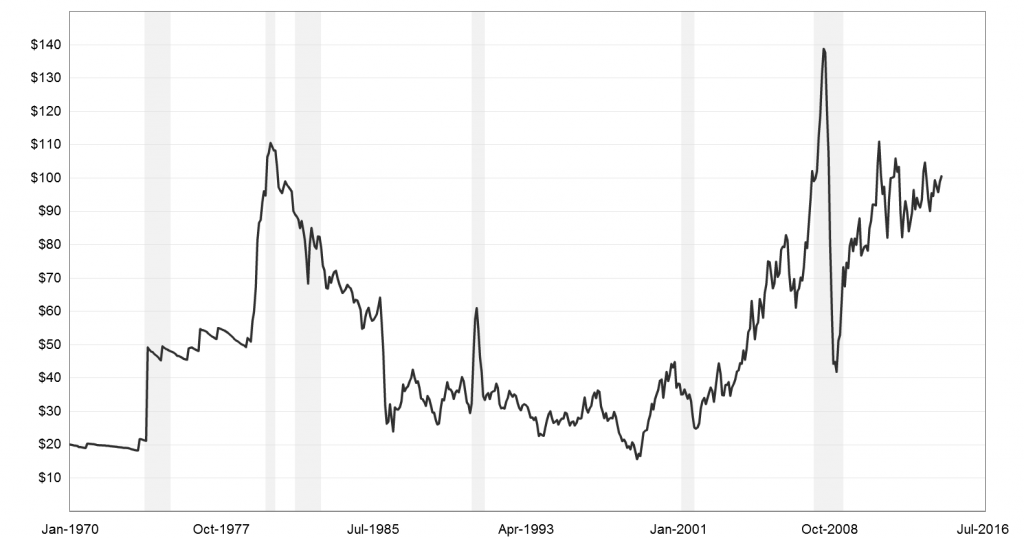There is obviously a big difference between macro and micro, when it comes to energy forecasting.
At the micro-level – for example, electric utility load forecasting – considerable precision often can be attained in the short run, or very short run, when seasonal, daily, and holiday usage patterns are taken into account.
At the macro level, on the other hand – for global energy supply, demand, and prices – big risks are associated with projections beyond a year or so. Many things can intervene, such as supply disruptions which in 2013, occurred in Nigeria, Iraq, and Lybia. And long range energy forecasts – forget it. Even well-funded studies with star researchers from the best universities and biggest companies show huge errors ten or twenty years out (See A Half Century of Long-Range Energy Forecasts: Errors Made, Lessons Learned, and Implications for Forecasting).
Peak Oil
This makes big picture concepts such as peak oil challenging to evaluate. Will there be a time in the future when global oil production levels peak and then decline, triggering a frenzied search for substitutes and exerting pressure on the whole structure of civilization in what some have called the petrochemical age?
Since the OPEC Oil Embargo of 1974, there have been researchers, thinkers, and writers who point to this as an eventuality. Commentators and researchers associated with the post carbon institute carry on the tradition.
Oil prices have not always cooperated, as the following CPI-adjusted price of crude oil suggests.
The basic axiom is simply that natural resource reserves and availability are always conditional on price. With high enough prices, more oil can be extracted from somewhere – from deeper wells, from offshore platforms that are expensive and dangerous to erect, from secondary recovery, and now, from nonconventional sources, such as shale oil and gas.
Note this axiom of resource economics does not really say that there will never be a time when total oil production begins to decline. It just implies that oil will never be totally exhausted, if we loosen the price constraint.
Net Energy Analysis
Net energy analysis provides a counterpoint to the peak oil conversation. In principle, we can calculate the net energy contributions of various energy sources today. No forecasting is really necessary. Just a deep understanding of industrial process and input-output relationships.
Along these lines, several researchers and again David Hughes with the post carbon institute project that the Canadian tar sands have a significantly lower net energy contribution that, say, oil from conventional wells.
Net energy analysis resembles life cycle cost analysis, which has seen widespread application in environmental assessment. Still neither technique is foolproof, or perhaps I should say that both techniques would require huge research investments, including on-site observation and modeling, to properly implement.
Energy Conservation
Higher energy prices since the 1970’s also have encouraged increasing energy efficiency. This is probably one of the main reasons why long range energy projections from, say, the 1980’s usually look like wild overestimates by 2000.
The potential is still there, as a 2009 McKinsey study documents –
The research shows that the US economy has the potential to reduce annual non-transportation energy consumption by roughly 23 percent by 2020, eliminating more than $1.2 trillion in waste—well beyond the $520 billion upfront investment (not including program costs) that would be required. The reduction in energy use would also result in the abatement of 1.1 gigatons of greenhouse-gas emissions annually—the equivalent of taking the entire US fleet of passenger vehicles and light trucks off the roads.
The McKinsey folks are pretty hard-nosed, tough-minded, not usually given to gross exaggerations.
A Sense In Which We May Already Have Reached Peak Oil
Check this YouTube out. Steven Kopits’ view of supply-constrained markets in oil is novel, but his observations about dollar investment to conventional oil output seem to hit the mark. The new oil production is from the US in large part, and comes from nonconventional sources, i.e. shale oil. This requires more effort, as witnessed by the poor financials of a lot of these players, who are speculating on expansion of export markets, but who would go bust at current domestic prices.
For Kopits slides go here. Check out these graphs from the recent BP report, too.

